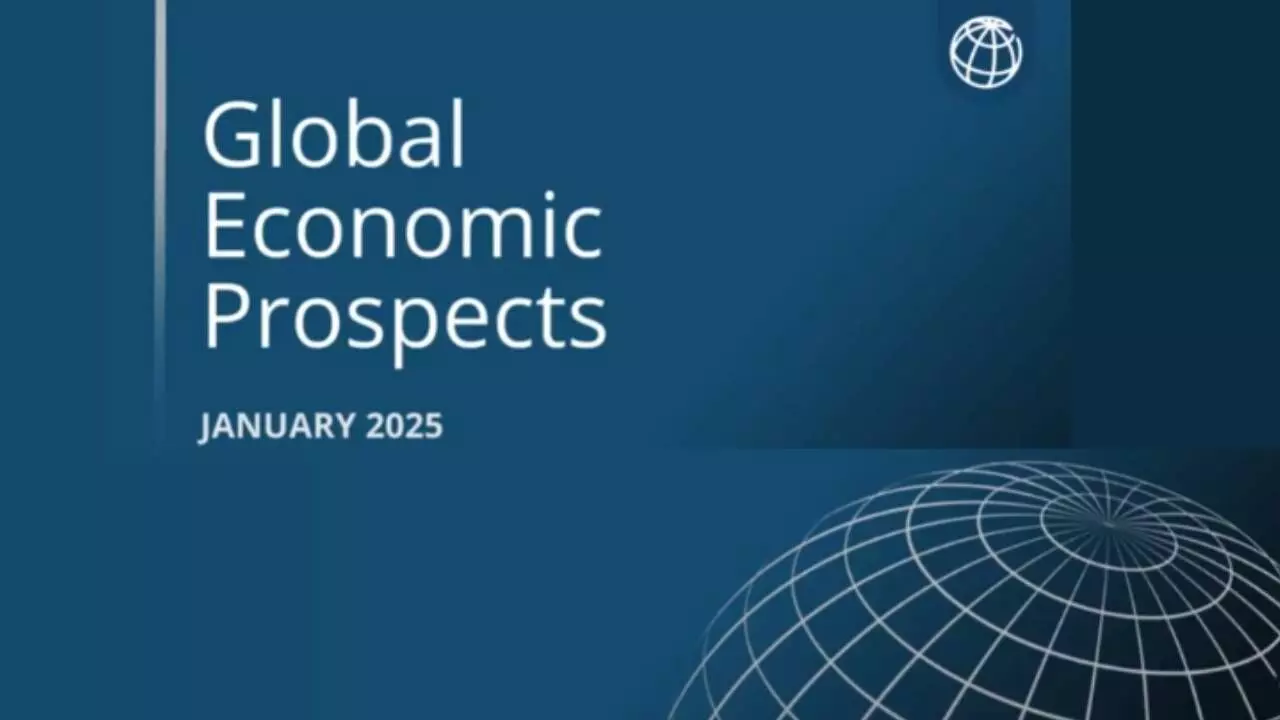India should pursue World Bank suggestions to boost economic prospects and accelerate growth rate
Achieving SDGs, especially hunger and poverty issues, by 2030 remains a herculean task
World Bank’s January Global Economic Prospects

Apparently, the year 2025-26 does not look as bright as one would expect because the global growth is expected to steady at 2.7 per cent which is way below the pre-pandemic average growth of 3.1 per cent.
Prevailing adverse factors like geo political uncertainty, adverse shifts in trade policy, focus on local rather than global that affect free trade, uncertainties due to climate change and the resultant disruptions and damage, among several such factors are all likely to impact negatively if remedial measures are not taken up to stem the rot. All nations must be party to such a streamlined approach in order to protect lives and the planet itself. In a way, achieving the
Sustainable Development Goals (SDGs), especially with regard to resolving hunger and poverty issues by 2030 remains a herculean task.
The World Bank’s January Global Economic Prospects mentioned that emerging market and developing economies are set to enter the second quarter of the 21st century with per capita income on a trajectory that implies feeble catch-up toward those of advanced economies. There is a desire for low income countries to catch up with the middle income nations, while middle income countries strive to emerge as developed economies. However most low income countries are not on course to graduate to middle income status by 2050. This is more so because the existing constraints are not being dealt with in the manner they ought to be. A proactive action policy at the global and national levels is urgently needed in order to foster a favourable external environment, across macroeconomic fundamentals and reducing structural constraints, among several such initiatives. These can be achieved only with global cooperation, particularly by an enthusiastic involvement of advanced economies, which should come to the rescue of low income and less developed countries, and multinational developed institutions, which together can facilitate sustainable growth and development of the nations desperate for support.
Any let up in growth levels of emerging markets and developing economies can pull back the global growth to alarming levels. The emerging markets and developing economies are expected to register a growth of 4.1 per cent in 2024, 4.1 per cent in 2025 and four per cent in 2026. Advanced economies are expected to show a uniform growth of 2.7 per cent in 2024, 2025 and 2026. South Asia comprising of India, Bangladesh and Pakistan will likely register 6.2 per cent for 2025 and 2026. India which had an impressive growth of 8.2 per cent for 2023-24 is likely to register much less at 6.5 per cent for 2024-25, 6.7 per cent for 2025-26 and 2026-27.
For a nation that is aspiring to become a developed economy by 2047, the current dip in growth does not augur well. There is a need to look at structural issues and come up with policy initiatives and reforms to boost all drivers of economic growth by way of investment.
There must be focus on development that is on medium and long-term basis, particularly labour reforms, land reforms, enhanced investment, innovation and technology adoption. India has to accelerate growth across these crucial parameters.
In China, which had showed slower growth, the government has stepped in with measures that assure economic boost, is likely to register less than 4.9 per cent growth for 2024, 4.5 per cent in 2025 and 4.1 per cent in 2026.
The US, China, India and Indonesia are some of the countries whose growth levels matter for world growth and it is necessary for effective reforms and favourable environment so that growth prospects won’t suffer.
Some of the suggestions given in the report towards emerging markets and developing economies include: need to prioritise boosting investment and productivity and navigating a difficult external environment and improving macroeconomic stability, while EMDEs are needed to improve sustainable growth prospects by reinvigorating key policy reforms; improving institutional and business environment, human capital development and digital transformation.
EMDEs need to adopt a comprehensive set of policies to mitigate the adverse effects of fragmentation and protectionist measures while seeking ways to take advantage of untapped opportunities for cross-border cooperation. They should implement a well-designed credible policy frameworks and putting in place sufficient buffers against stocks. With the bulwarks established by these policies, EMDEs will be less vulnerable to external shocks and more likely to use a countercyclical policy when needed.
The challenges facing EMDEs like weakening growth prospects, difficult external environment, narrowing fiscal space, underdeveloped financial markets and climate change and natural disasters have to be tackled with proactive action.
Those apart one must forge strategic trade and investment agreements, improve and focus on trade costs and efficiency, come up with a vibrant industrial policy, a judicial fiscal policy and a policy that can boost the financial sector, says the World Bank report. These suggestions are particularly relevant to India, which has to be guarded by global uncertainties, while simultaneously taking proactive measures to cash in on the global opportunities. The way forward will be in formulating viable policy initiatives.
The upcoming budget has a greater relevance as India has to lift itself from the current slow growth and go in for short medium and long-term growth economic and fiscal policies. These measures are certain to boost both domestic and international investments, and accelerate economic growth and development. The per capita income needs to be focused on with qualitative improvement at the bottom of the pyramid.
(The author is former Chairman & Managing Director of Indian Overseas Bank)

